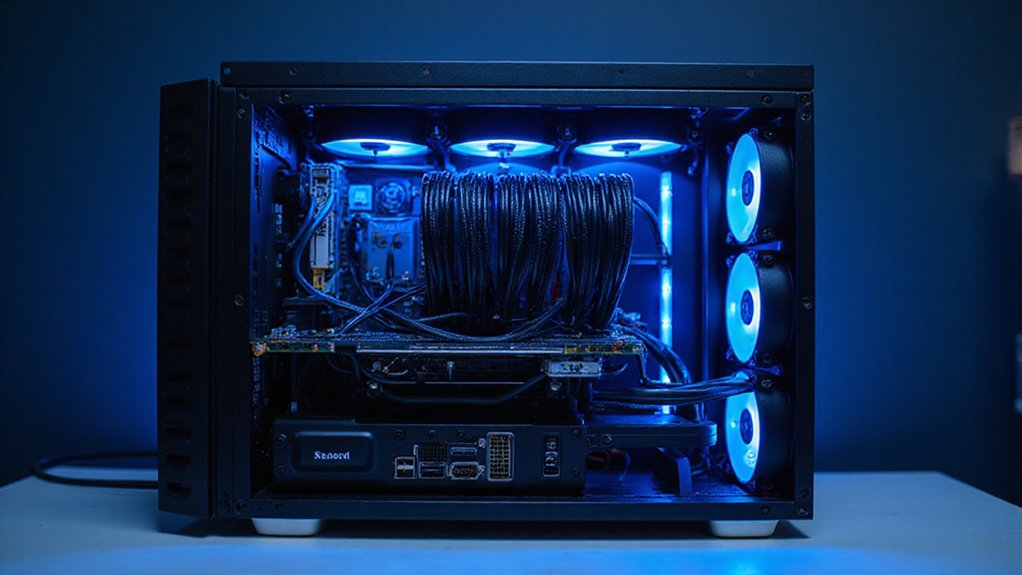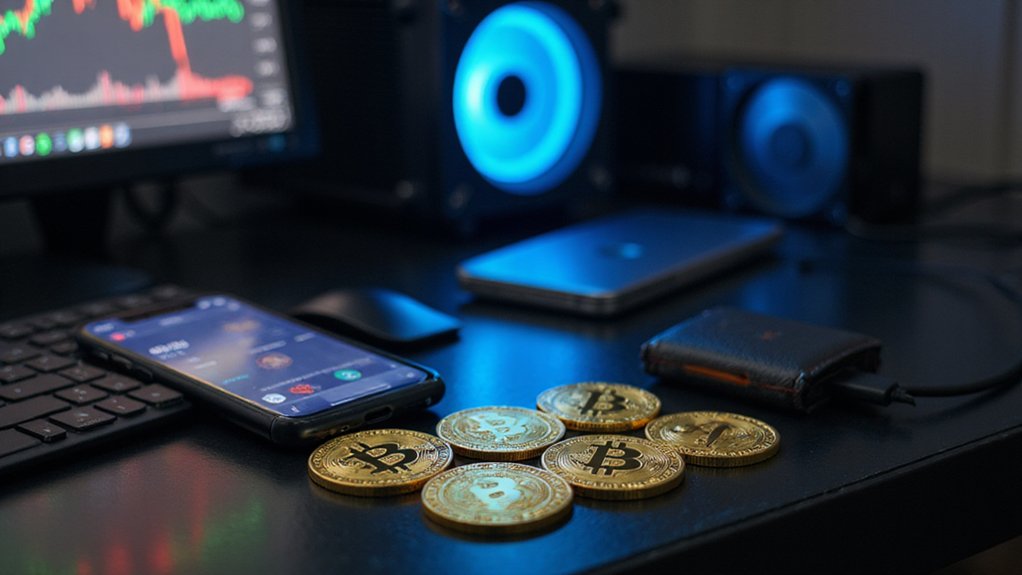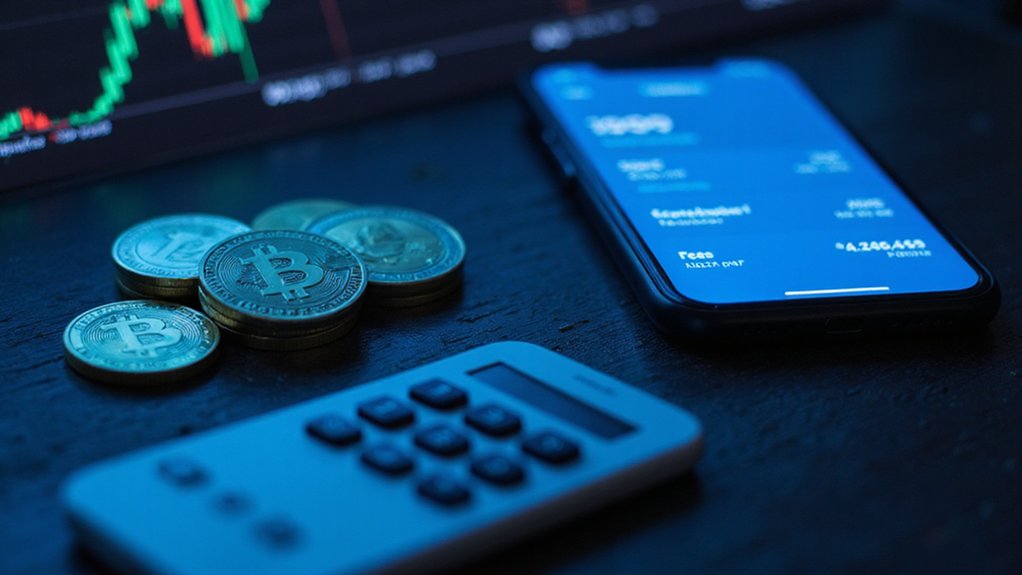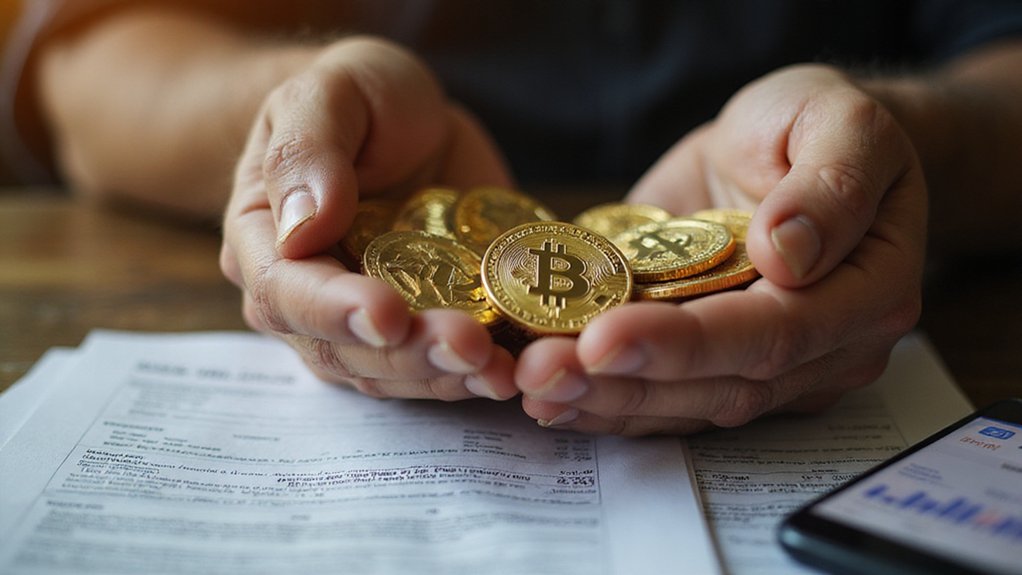To secure cryptocurrency airdrops, newcomers should establish non-custodial wallets (MetaMask remains the industry standard), monitor announcement channels, and satisfy eligibility criteria—often involving token holdings or testnet participation. Strategic approaches include holding blue-chip assets, engaging with Layer-2 networks, and participating in governance activities. Security-conscious participants maintain dedicated wallets for these distributions, mitigating phishing risks and smart contract vulnerabilities. The cryptocurrency landscape rewards those who combine vigilance with strategic positioning in emerging ecosystems.

Why trudge through conventional investment channels when the cryptocurrency market offers a peculiar method of asset acquisition that requires no initial capital outlay?
Cryptocurrency airdrops—the digital equivalent of finding money on the sidewalk—distribute free tokens to wallet addresses based on predetermined criteria.
This peculiar distribution mechanism serves both marketing and decentralization purposes, though one might reasonably question whether such largesse represents genuine value or merely manufactured scarcity dressed in technological novelty.
The airdrop ecosystem presents several variations: holder airdrops reward existing cryptocurrency possessors at snapshot moments; forked airdrops materialize when blockchains bifurcate (as witnessed in Bitcoin Cash’s emergence); bounty airdrops compensate social engagement; exclusive airdrops target community cornerstones; while raffle airdrops introduce probabilistic elements to distribution mechanics.
Success in this domain requires systematic monitoring of announcement channels—cryptocurrency forums, social media platforms, and aggregator websites functioning as digital town criers of tokenized opportunity.
Securing these digital windfalls necessitates preparation: establishing non-custodial wallets (MetaMask, Trust Wallet, et al.), satisfying eligibility parameters (holding specific tokens, participating in testnet activities, or transacting on Layer-2 solutions), and completing registration protocols. Some exchanges like Coinbase and Binance offer “Learn and Earn” programs where completing educational quizzes can result in free cryptocurrency rewards.
Prudent participants maintain dedicated wallets for airdrop activities, recognizing the unfortunate abundance of fraudulent operations designed to separate the unwary from their digital assets.
The landscape brims with security hazards—phishing schemes masquerading as legitimate projects, counterfeit token distributions with embedded malicious links, and smart contract vulnerabilities constitute merely a subset of potential pitfalls.
Additionally, the tax implications of these “free” tokens often go woefully underconsidered until revenue authorities come calling.
For those exploring this curious corner of digital finance, strategic participation across blue-chip token holdings, testnet engagement, and early project adoption may greatly enhance qualification opportunities. Projects typically capture blockchain snapshots to identify eligible wallets at specific moments before distribution begins.
The contemporary crypto ecosystem particularly favors Layer-2 network users and governance participants—revealing an unstated preference for technologically engaged community members over passive speculators.
After all, in the cryptosphere’s peculiar economics, yesterday’s network participants frequently become tomorrow’s token recipients.
These distributions have become an increasingly popular marketing tactic for new cryptocurrency projects seeking to build a larger user base and ensure broader token distribution without traditional fundraising methods.
Frequently Asked Questions
Are Airdrops Taxable Events?
Yes, cryptocurrency airdrops constitute taxable events in the eyes of the IRS.
Recipients incur ordinary income tax liability at the moment they gain control over the tokens, with the fair market value at receipt establishing the cost basis.
This initial taxation (reported on Form 1040 Schedule 1) represents merely the opening act of one’s tax obligations; subsequent disposition triggers capital gains considerations, with the holding period determining whether short-term or long-term rates apply.
Meticulous record-keeping, naturally, remains paramount.
Can I Participate in Airdrops From Any Country?
Airdrop participation varies greatly by jurisdiction, with certain countries facing outright exclusion due to regulatory frameworks.
While crypto-friendly nations offer relatively unfettered access, residents of heavily regulated territories (China, Canada) often encounter insurmountable barriers.
The global patchwork of compliance requirements—including AML/KYC protocols and geofencing policies—creates a remarkably uneven playing field.
Prudent participants should verify their eligibility beforehand, as circumventing restrictions via VPNs may violate terms and trigger potential legal consequences.
How Risky Are Cryptocurrency Airdrops?
Cryptocurrency airdrops carry multifaceted risks spanning security, regulatory, financial, and operational domains.
They present a curious paradox: “free” tokens that often extract hidden costs—whether through phishing vulnerabilities, smart contract exploits, or the IRS’s inevitable hand.
While enthusiasts chase these digital windfalls (sometimes spending more in gas fees than the tokens’ worth), they navigate a landscape where SEC scrutiny looms, tax liabilities accumulate, and wallet security remains perpetually vulnerable.
The risk-reward calculus demands sobering consideration.
What’s the Average Value of a Typical Airdrop?
According to 2024 data, the average airdrop value per project stands at $309.8 million, though this figure obscures considerable variability in individual user rewards.
While headline-grabbing projects like Hyperliquid have delivered windfalls approaching $30,000 to fortunate participants, most users receive substantially less.
The underlying trend shows declining average values—a reflection of market saturation and the increasingly tenuous relationship between airdrop generosity and sustainable tokenomics in the cryptocurrency ecosystem.
Can Airdropped Tokens Be Immediately Sold?
Airdropped tokens often come with strings attached.
While some can be traded immediately, many face restrictions through lockup periods, smart contract limitations, or project-specific vesting schedules.
Regulatory compliance adds another layer of complexity—tokens potentially classified as securities face SEC scrutiny and trading limitations.
Technical factors further complicate matters; exchange listings are prerequisites for liquidity, and claiming mechanisms may delay access.
The inconvenient truth? That sudden windfall might require patience before conversion to fiat.









